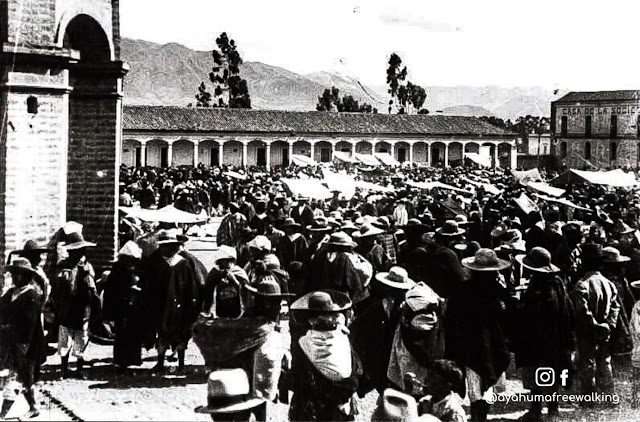A brief history of the ancient Otavalo
When we talk about the appearance of the Otavalo community, we introduce ourselves in multiple investigations, monographs, chronicles, articles and reports that fail to define its origin exactly. However, Carlos Larrea, in his study "Notes of Prehistory and Ecuadorian History", maintains that the oldest archaeological remains worked by skilled and persistent hands, date back some 10,000 years old, the same ones that were found in the Sierra Norte de Quito
For González Suárez, in his work "The aborigines of Imbabura and Carchi", he maintains that the tribes that populated Imbabura and a part of what is today Ecuador, come from the Antillana branch, coming from the Caribbean, that arrived in these lands to through the Marañón and Napo rivers.
In spite of this variety of interpretations, regarding the origin of the communities: Imbayas, Sarances and Otavaleña, we can affirm that at a time of the migration, groups of hunter-gatherers were interacting, due to the need to subsist, which generated , in a second moment, a knowledge of the environment, of plants and animals to the point that they developed systems of agriculture, irrigation, domestication of animals and, in a slow and gradual way, they began to produce rich artisanal expressions, reaching high levels of organization and production.
These forms of organization of the Imbayas, Sarances and especially those of Otavalo, were coveted by the Incas, who commanded by Tupac-Yupanqui, advanced towards Atuntaqui, Cayambe, Otavalo, to dominate them, which was not easy, since Hualcopo and Caranqui, together with Caciques de Cayambe and Otavalo, organized an unwavering resistance that lasted approximately 17 years.
Following the incidental wars came the Spanish invasion, where indigenous organizations of Cayambe, coordinated and directed by the Píntag and Nazacota Puento chiefs, weakened the invaders' aggressions.
In spite of all these efforts, in 1534 the Spanish foundation the Otavalo settlement takes place, probably in the partiality of Santiaguillo. It was set as limits: to the north, the province of Pastos, to the south the Pisque river, to the east San Miguel de Sucumbíos and the territory of the Mocoas and to the west the old province of Atacames, to the junction of the rivers Guayllabamba and Llumiragua.
The interests of both the Incas and the Spaniards were to conquer organized and productive communities, that is how Otavalo was seen as an inexhaustible source of wealth, for its agriculture and for the development of handicrafts. On the one hand, the Incas introduced the Mitimaes system for knowledge exchange, thus guaranteeing production, on the other hand, the Spanish took advantage of all these forms of organization and implemented wealth generating exploitation mechanisms that came out as tributes, through the mita, the concertaje.
In 1557, the Otavalo Correction is established. By November 1811, the Governing Board and General Captaincy of Quito, ascends to the Otavalo Corregimiento to the Village Category, declaring it the Center of military operations against New Granada. But it is October 31, 1829 that Simón Bolivar gives him the status of a City.
References
San Félix, A. (1988). Monografía de Otavalo. Instituto Otavaleño de Antropología.


Comments
Post a Comment